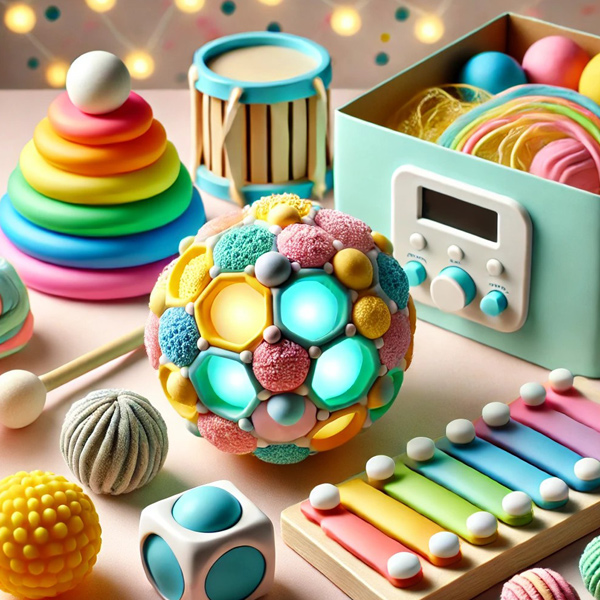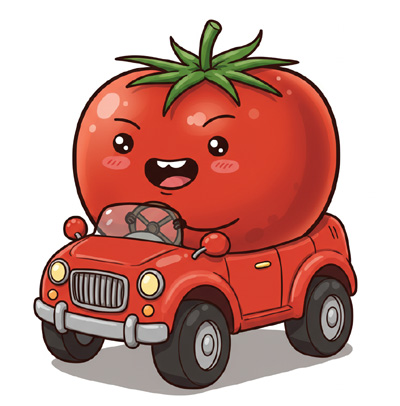Table of Contents
In the world of child development, sensory play is essential. Sensory development toys are designed to stimulate one or more of a child’s senses—touch, sight, sound, taste, and smell—helping them explore and understand their environment. These toys play a vital role in cognitive growth, motor skills, problem-solving abilities, and emotional regulation. Whether you’re a parent, educator, or caregiver, selecting the right sensory toys can foster a child’s learning experience in remarkable ways.
What Are Sensory Development Toys?
Sensory development toys engage children’s senses, encouraging exploration, creativity, and learning. They often include different textures, colors, sounds, and interactive elements that help kids develop fine and gross motor skills. These toys are particularly beneficial for infants, toddlers, and children with sensory processing disorders, autism, or developmental delays.
Types of Sensory Development Toys
1. Tactile Toys (Touch-Based Development)
Tactile sensory toys encourage children to explore different textures, temperatures, and shapes. These toys can include:
- Textured Balls: Soft, spiky, or rubbery surfaces improve grip and sensory awareness.
- Kinetic Sand & Playdough: Enhances fine motor skills while providing a satisfying hands-on experience.
- Fabric Books & Sensory Mats: Introduce various textures, improving a child’s sense of touch.
2. Visual Stimulation Toys (Sight-Based Development)
These toys help children develop their ability to track movement, recognize colors, and improve focus. Examples include:
- Light-Up & Glow Toys: Flashing lights and contrasting colors boost visual tracking skills.
- Puzzle Boards & Sorting Games: Encourages problem-solving and hand-eye coordination.
- Mirrors & High-Contrast Books: Beneficial for infants to develop visual perception.

3. Auditory Toys (Sound-Based Development)
Hearing is crucial for language and cognitive development. Some great auditory sensory toys include:
- Musical Instruments (Drums, Xylophones, Shakers): Helps with rhythm recognition and coordination.
- Sound Books: Engaging storytelling with different sound effects enhances auditory processing.
- White Noise & Nature Sound Toys: Provides calming effects and supports relaxation.
4. Olfactory & Taste-Based Sensory Toys
Smell and taste play a significant role in memory and emotional connections. Toys designed for these senses include:
- Scented Playdough & Crayons: Engages children’s sense of smell in a fun way.
- Edible Finger Paints: Safe and creative sensory play for younger children.
- Aromatherapy Plush Toys: Stuffed animals infused with calming lavender or chamomile scents.
5. Proprioceptive & Vestibular Toys (Movement & Balance Development)
These toys help children understand body awareness and coordination. Some options include:
- Balance Boards & Swings: Develops core strength and motor planning.
- Weighted Blankets & Compression Vests: Provides deep pressure stimulation for sensory regulation.
- Jumping & Climbing Toys: Encourages full-body movement and spatial awareness.
Benefits of Sensory Toys in Child Development
Sensory development toys offer a multitude of benefits, including:
- Cognitive Growth: Enhances problem-solving, memory, and reasoning skills.
- Motor Skills Development: Improves fine and gross motor coordination.
- Emotional Regulation: Helps children manage stress and anxiety.
- Social Interaction: Encourages cooperative play and communication skills.
- Language Development: Auditory-based toys improve speech and language acquisition.
Choosing the Right Sensory Toys
When selecting sensory toys, consider the child’s age, interests, and specific developmental needs. Look for toys that are:
- Safe & Non-Toxic: Ensure the materials are child-friendly and BPA-free.
- Age-Appropriate: Designed to match a child’s developmental stage.
- Interactive & Engaging: Encourages hands-on learning and exploration.
- Durable & Easy to Clean: Built to withstand regular use.
Final Thoughts
Sensory development toys are more than just playthings; they are tools that shape a child’s learning journey. By incorporating sensory play into daily routines, parents and educators can create engaging and meaningful experiences that support overall development. Whether it’s a textured ball, a musical instrument, or a balance board, the right sensory toy can spark curiosity and growth in every child.
Investing in sensory toys isn’t just about entertainment—it’s about nurturing the foundation for lifelong learning.
